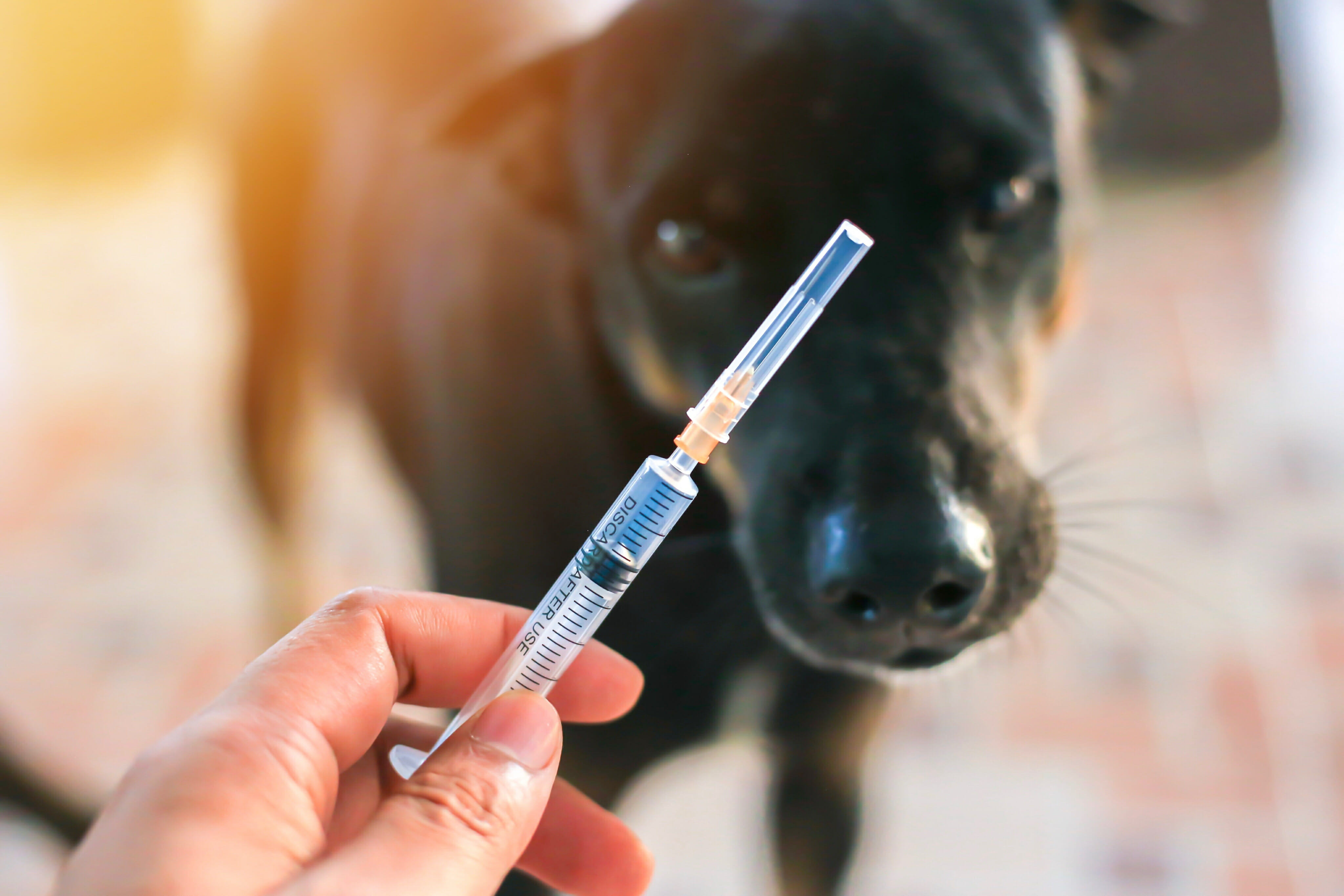
Rabies is a virus that is usually spread by the bite or scratch of an animal. By the time the symptoms appear, it is generally too late to save the patient.
However, a person who may have been exposed to rabies can usually be treated effectively if they seek help at once.
Fast facts on rabies
Rabies is a viral infection that mainly spreads through a bite from an infected animal. It is an RNA virus of the rhabdovirus family.
Without early treatment, it is usually fatal.
The virus can affect the body in one of two ways:
Once inside the nervous system, the virus produces acute inflammation of the brain. Coma and death soon follow.
There are two types of rabies.
Furious, or encephalitic rabies: This occurs in 80 percent of human cases. The person is more likely to experience hyperactivity and hydrophobia.
Paralytic or "dumb" rabies: Paralysis is a dominant symptom.
Rabies is most common in countries where stray dogs are present in large numbers, especially in Asia and Africa.
It is passed on through saliva. Rabies can develop if a person receives a bite from an infected animal, or if saliva from an infected animal gets into an open wound or through a mucous membrane, such as the eyes or mouth. It cannot pass through unbroken skin.
Any mammal can harbor and transmit the virus, but smaller mammals, such as rodents, rarely become infected or transmit rabies. Rabbits are unlikely to spread rabies.
Rabies progresses in five distinct stages:
This is the time before symptoms appear. It usually lasts from 3 to 12 weeks, but it can take as little as 5 days or more than 2 years.
The closer the bite is to the brain, the sooner the effects are likely to appear.
By the time symptoms appear, rabies is usually fatal. Anyone who may have been exposed to the virus should seek medical help at once, without waiting for symptoms.
Early, flu-like symptoms, include:
These can last from 2 to 10 days, and they worsen over time.
Neurologic symptoms develop, including:
Toward the end of this phase, breathing becomes rapid and inconsistent.
If the person enters a coma, death will occur within a matter of hours, unless they are attached to a ventilator.
Rarely, a person may recover at this late stage.
Intense spasms in the throat are triggered when trying to swallow. Even the thought of swallowing water can cause spasms. This is where the fear comes from.
The excess saliva that occurs is probably due to the impact of the virus on the nervous system.
If the individual could swallow saliva easily, this would reduce the risk of spreading the virus to a new host.
At the time of a bite, there is usually no way to tell for sure whether an animal is rabid, or whether it has passed on an infection.
Lab tests may show antibodies, but these may not appear until later in the development of the disease. The virus may be isolated from saliva or through a skin biopsy. However, by the time a diagnosis is confirmed, it may be too late to take action.
For this reason, the patient will normally start a course of prophylactic treatment at once, without waiting for a confirmed diagnosis.
If a person develops symptoms of viral encephalitis following an animal bite, they should be treated as if they may have rabies.
If a person is bitten or scratched by an animal that may have rabies, or if the animal licks an open wound, the individual should immediately wash any bites and scratches for 15 minutes with soapy water, povidone iodine, or detergent. This might minimize the number of viral particles.
Then they must seek medical help at once.
After exposure and before symptoms begin, a series of shots can prevent the virus from thriving. This is usually effective.
Strategies include:
A fast-acting dose of rabies immune globulin: Delivered as soon as possible, close to the bite wound, this can prevent the virus from infecting the individual.
A series of rabies vaccines: These will be injected into the arm over the next 2 to 4 weeks. These will train the body to fight the virus whenever it finds it.
It is not usually possible to find out whether the animal has rabies or not. It is safest to assume the worst and begin the course of shots.
A small number of people have survived rabies, but most cases are fatal once the symptoms develop. There is no effective treatment at this stage.
A person with symptoms should be made as comfortable as possible. They may need breathing assistance.
Rabies is a serious disease, but individuals and governments can and do take action to control and prevent, and, in some cases, wipe it out completely.
Strategies include:
In rural Canada and the U.S., agencies have dropped baits containing an oral vaccine to reduce the number of wild raccoons with rabies.
In Switzerland, the authorities distributed vaccine-laced chicken heads throughout the Swiss Alps. The foxes immunized themselves by consuming the vaccine, and the country is now almost free of rabies.
Individuals should follow some safety rules to reduce the chance of contracting rabies.
In 2015, a woman died from rabies after being bitten by a bat during the night. She did not realize she had been bitten.
Anyone who is traveling to an area where rabies is prevalent, or who is participating in activities where they are likely to come into contact with wild animals that may have rabies, such as caving or camping, should ask their doctor about vaccinations.